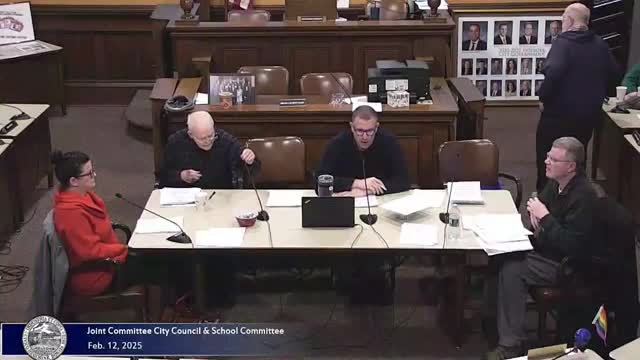Council reviews future plans for historic Metcalf School amid community concerns
February 15, 2025 | Holyoke City, Hampden County, Massachusetts
This article was created by AI summarizing key points discussed. AI makes mistakes, so for full details and context, please refer to the video of the full meeting. Please report any errors so we can fix them. Report an error »

The recent joint meeting of the Holyoke City Council and School Committee highlighted significant discussions regarding the future of Metcalf School, a historic building that has been a focal point of community education since its establishment in 1911. The committee members, including School Committee members and City Councilors, gathered to address the pressing need for a strategic plan concerning the school’s future.
A key agenda item was the motion introduced by Councilors Bartley, Jourdain, and Graney, which called for a comprehensive plan from the school department, the school committee, and the mayor. The motion emphasized the importance of preserving Metcalf School as a learning institution, while also considering its potential as a headquarters for the school department if educational use is no longer viable. The committee unanimously supported this motion, reflecting a strong community interest in maintaining the building's legacy.
Superintendent Anthony Soto provided an overview of the current state of Metcalf School, noting that a working group had been formed to explore various options for the building. This group, which included key stakeholders from the school department, discussed 14 different possibilities for the future use of the facility. One of the primary concerns raised was the need for additional space for the transitions program currently housed at Open Square, which has been experiencing overcrowding.
The superintendent indicated that the working group had prepared a report outlining their recommendations, which included the potential use of Metcalf School to alleviate space issues for the transitions program. Currently, the program is renting space at a cost of $50,000 per year, and there are concerns about its suitability for the growing needs of students.
This meeting marks a pivotal moment for the Holyoke community as it seeks to balance the preservation of its historical educational institutions with the evolving needs of its students. The discussions surrounding Metcalf School will continue, with the next steps involving further exploration of the recommendations made by the working group and ongoing community engagement to ensure that the needs of residents are met.
A key agenda item was the motion introduced by Councilors Bartley, Jourdain, and Graney, which called for a comprehensive plan from the school department, the school committee, and the mayor. The motion emphasized the importance of preserving Metcalf School as a learning institution, while also considering its potential as a headquarters for the school department if educational use is no longer viable. The committee unanimously supported this motion, reflecting a strong community interest in maintaining the building's legacy.
Superintendent Anthony Soto provided an overview of the current state of Metcalf School, noting that a working group had been formed to explore various options for the building. This group, which included key stakeholders from the school department, discussed 14 different possibilities for the future use of the facility. One of the primary concerns raised was the need for additional space for the transitions program currently housed at Open Square, which has been experiencing overcrowding.
The superintendent indicated that the working group had prepared a report outlining their recommendations, which included the potential use of Metcalf School to alleviate space issues for the transitions program. Currently, the program is renting space at a cost of $50,000 per year, and there are concerns about its suitability for the growing needs of students.
This meeting marks a pivotal moment for the Holyoke community as it seeks to balance the preservation of its historical educational institutions with the evolving needs of its students. The discussions surrounding Metcalf School will continue, with the next steps involving further exploration of the recommendations made by the working group and ongoing community engagement to ensure that the needs of residents are met.
View full meeting
This article is based on a recent meeting—watch the full video and explore the complete transcript for deeper insights into the discussion.
View full meeting
